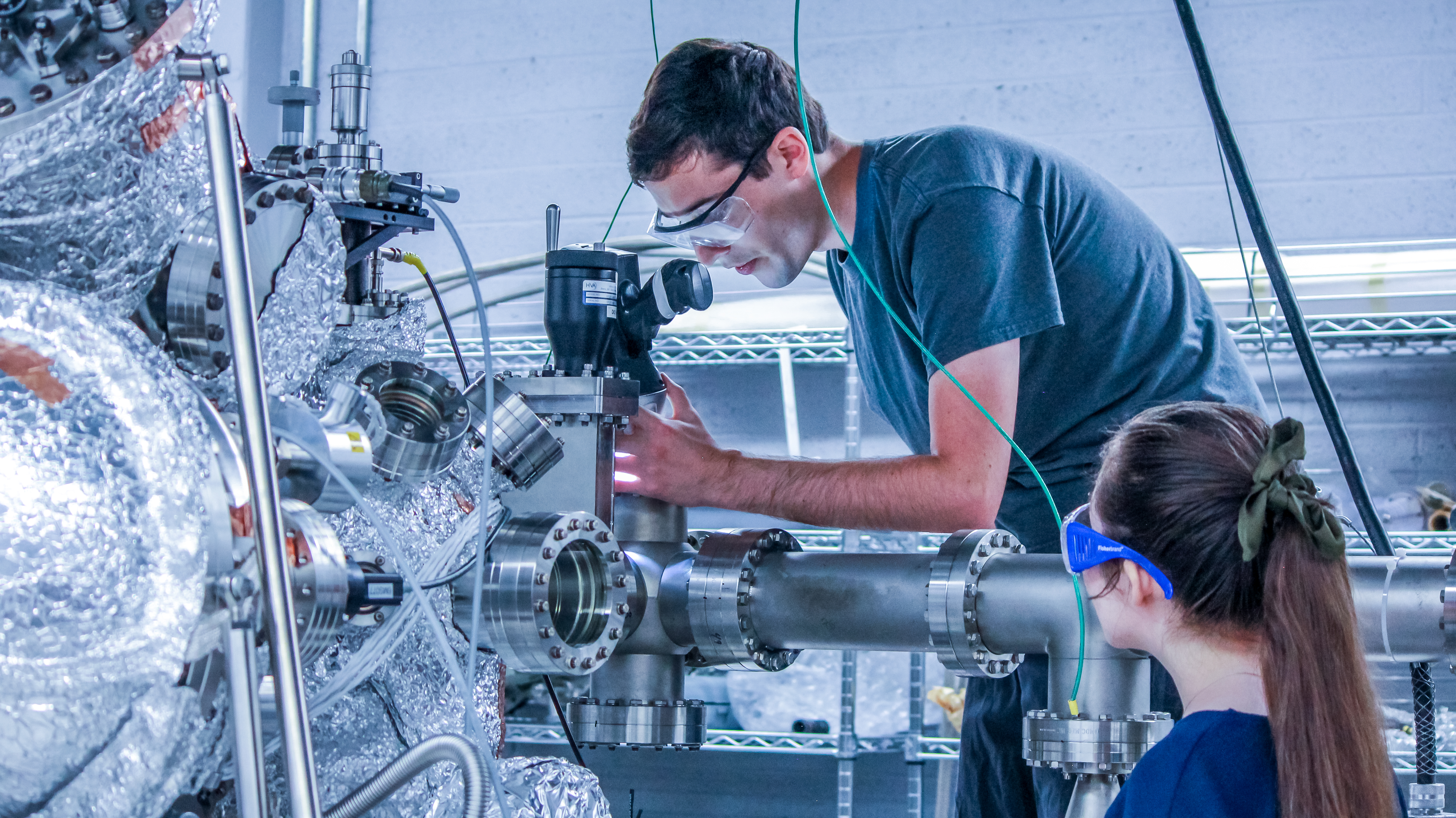Diamond is a wide bandgap semiconductor with outstanding semiconductor properties that have long been recognized for high power and high-frequency applications. While p-type doping with boron has been well characterized for two decades, n-type doping with phosphorus has recently advanced in a number of laboratories and understanding Electrons in Diamond could enable a new generation of diamond devices based on electron transport and electron emission from conduction band states into vacuum.
The focus of this project is to establish the scientific basis for electrons in diamond through understanding electron injection and diamond-dielectric interfaces to enable electron transport, confinement, and surface electron emission. Three related questions will be addressed.
- Can electrons be transported into the conduction band of diamond?
- Can a dielectric-diamond interface be formed that confines electrons in diamond?
- Can a surface termination of diamond enable continued efficient electron emission into vacuum or water?
Diamond has the highest known thermal conductivity, which enables high power operation, and the high electron and hole mobilities support high power and efficient power switching characteristics. These properties and the chemical stability of diamond contribute to its potential as a high temperature semiconductor capable of operating well above 500°C. Moreover, the wide bandgap and bipolar characteristics enable junction field effect transistor (JFET) designs, which are notably more stable at high temperature than oxide field effect transistor designs. This project will develop, test and simulate diamond power transistors for power conversion, distribution, and mechanical system control at high temperatures (>500°C). The diamond power transistor and diode devices will be combined to design and demonstrate a power conversion module that will operate at high temperature (>500°C) for extended periods (>60 days).
Beyond demonstration of a lateral and vertical diamond JFET, the project will develop computational models to simulate and design diamond diode and transistor devices for specific characteristics. The team will design and simulate a diamond power conversion module relevant to planetary space missions. The project will identify specific space exploration mission objectives that would be impacted by diamond power electronics.
Beyond demonstration of a lateral and vertical diamond JFET, the project will develop computational models to simulate and design diamond diode and transistor devices for specific characteristics. The team will design and simulate a diamond power conversion module relevant to planetary space missions. The project will identify specific space exploration mission objectives that would be impacted by diamond power electronics.
Ultra-wide bandgap (UWBG) semiconductors have been identified as a crucial enabling materials technology. These UWBG semiconductor and dielectric materials (or ‘Ultra’ materials) present a new realm for high field transport, electron-phonon interactions, and heat transport. Understanding their novel properties will enable “reinventing the electricity grid” by providing efficient energy conversion and control (Smart Grid) and a significant reduction in size: a substation could be replaced by a suitcase-sized power converter (Resilient Grid).
Dr. Nemanich serves as the Director of ULTRA and is an investigator with Thrusts 1-3. His scientific role is contributing to plasma-CVD and MBE diamond and BN epitaxial growth as well as ALD of ultra-dielectrics, surface, and interface characterization.
The UWBG semiconductors of interest include cubic diamond, hexagonal AlN and BxAl1-xN alloys, which bridge the two, and oxide and fluoride dielectrics. The focus on basic science challenges are in four thrust areas:
- Growth, Defects and Impurities
- Heterogeneous interfaces
- Carrier dynamics and high field transport.
- Thermal energy transport and interfaces.
Dr. Nemanich serves as the Director of ULTRA and is an investigator with Thrusts 1-3. His scientific role is contributing to plasma-CVD and MBE diamond and BN epitaxial growth as well as ALD of ultra-dielectrics, surface, and interface characterization.
The extreme and unusual properties of diamond will enable novel devices including vacuum electron emission and quantum transport and optical properties. Depending on surface termination diamond surfaces can directly emit electrons into vacuum without an energy barrier. This property is enabled by a negative electron affinity (or NEA). Novel diamond PIN diodes can be designed and fabricated which efficiently emit electrons into vacuum. The research is focused on understanding the surface properties and diamond PIN device design that enables a compact, efficient cathode design that can be directly modulated.
Diamond growth at the ASU Diamond Materials Laboratory is housed in the Materials Technology Works building at the ASU Research Park. The laboratory houses six systems for growth of diamond epitaxial and thin films. The laboratory specializes in high purity deposition of intrinsic and doped diamond. The custom designed systems employ microwave plasma deposition and in situ characterization to monitor the growth during deposition.
